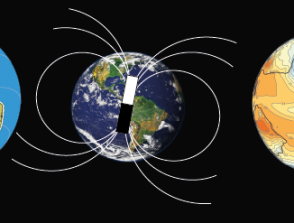The Karoo traps and early Jurassic extinctions : eruptive dynamics and environmental perturbations
Start: 01 October 2007
End: 01 July 2011
Supervisors :
Frédéric Fluteau, Vincent Courtillot
Related teams :
Paleomagnetism Paleoclimate Environment (PAMCE)
Status: Defended
Doctoral dissertation – Maud Moulin
Although correlation of the dates of emplacement of large igneous provinces (LIP) and mass extinctions do suggest a causal relationship, details of the mechanism still elude us. Many factors can play a key role in the destructive consequences of their emplacement: among these, we have chosen to concentrate on eruptive rhythms. Our study focuses on the Karoo-Farrar LIP: aged about 180 Ma, it is often associated with the environmental perturbations and (second order) biotic crises near the Pliensbachian-Toarcian boundary. What reasons could explain the modest biological consequences of the Karoo eruption, when its extent and volume were comparable, and even possibly larger than those of the Deccan traps, associated to the major Cretaceous-Tertiary crisis? We have sampled three sections of basalt flows from the Drakensberg Group, the largest Karoo remain, totaling several thousand meters, and we have analyzed in the laboratory more than one thousand paleomagnetic samples and ten geochronologic samples (using the Cassignol/Gillot K-Ar technique). We find two rather brief paroxysmal phases, separated by a few million years. Study of magnetic stratigraphy suggests that the duration of the first phase (amounting to about 10% of the total lava volume) did not exceed ~100 kyr. The duration of the major volcanic event (some 90% of the volume) did not exceed 900 kyr, and possibly much less. On a much smaller time scale (<1 ka), detailed analysis of secular variation in each section has allowed us to show that they were built as a succession of volcanic pulses, each lasting less than a century. For each one of them, volcanic activity (stricto sensu, corresponding to the total duration of flow emplacement but excluding quiescence periods between flows) probably did not exceed a few centuries for phase 1 and a few millennia for phase 2. Using magnetic directions, several volcanic pulses could be correlated over distances reaching 200 km. Combined analysis of available geochronologic, geochemical and paleomagnetic data from the entire Karoo-Farrar traps leads us to suggest that they were emplaced as a small number (3 or 4) of paroxysmal phases, whose duration probably did not exceed a million years. This emplacement chronology is in good agreement with the discontinuous rhythm of environmental and biotic perturbations near the Pliensbachian-Toarcian boundary. We discuss several eruptive scenarios. Lastly, this work has given us an occasion to revisit the single reversal recorded by the Karoo lavas and described by van Zijl in the early 60s. We obtain a very detailed virtual pole reversal path, based on several distant recordings. The reversal path is rather simple and compatible with a few brief eruptive episodes and displays the same characteristics as more recent, much better known reversals.





